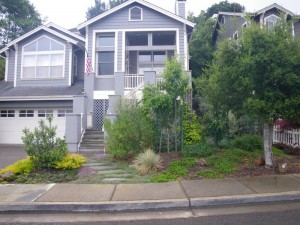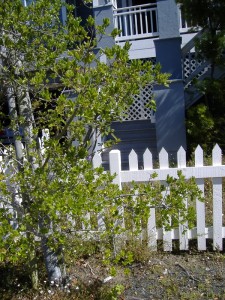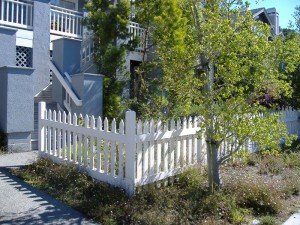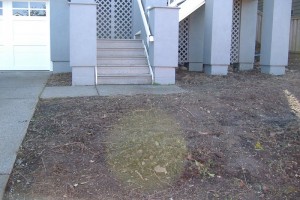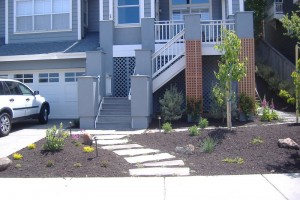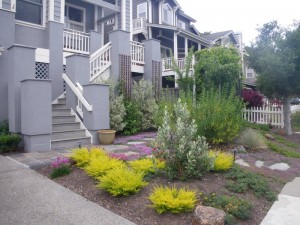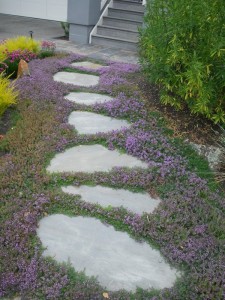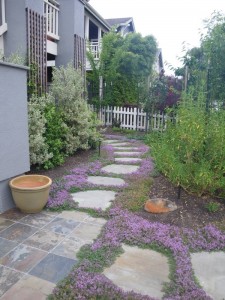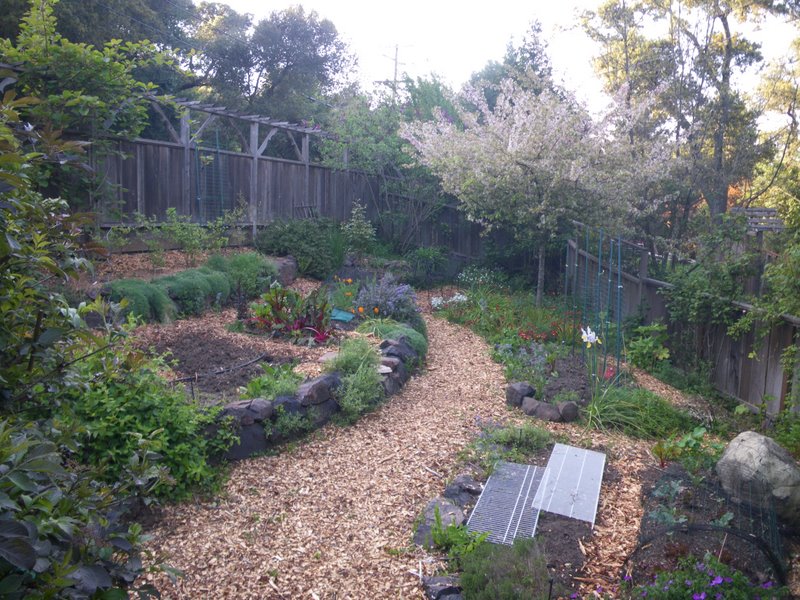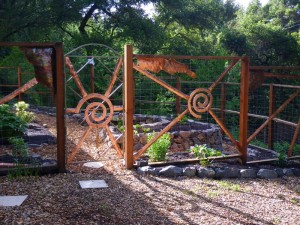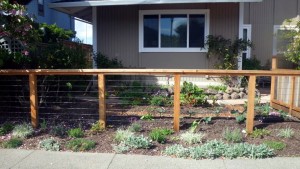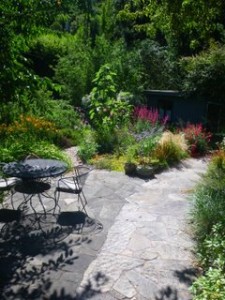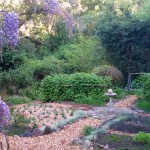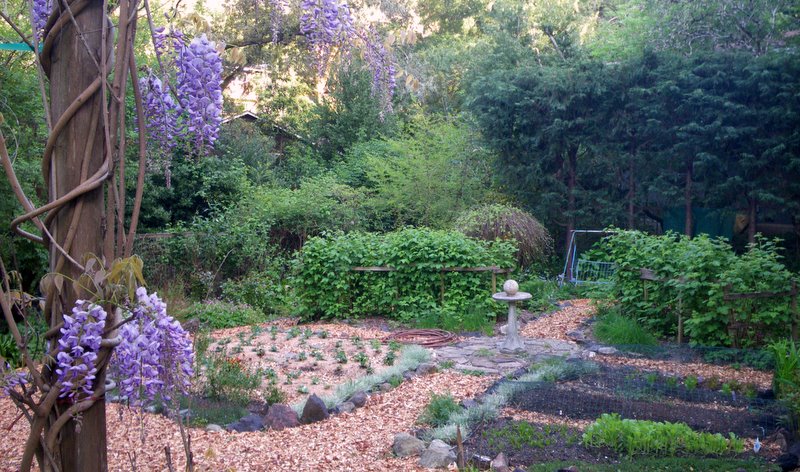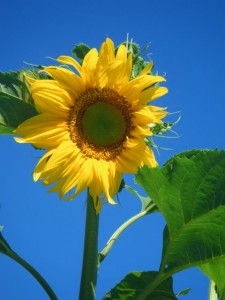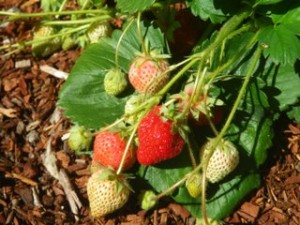Creating a beautiful front yard is always challenging, and adding the parameters of “Edible” and “Deer Resistant” can make it even more challenging. At the house in the photo above, the houses were close together, all had white picket fences, and home to roaming, munching deer.
This is what the yard looked like before we started:
From the side walk you can’t get through to the front steps without going into the driveway. An oak tree also hid the front entry.
This is looking at the yard from the corner of the yard standing in the driveway:
Once you clear out everything you don’t need/want, it is easier to imagine the changes that you can make. Here it is all cleaned up:
At this point, we decided where to put in a front path leading to the stairs, so that people visiting didn’t have to walk onto the driveway. We also laid out a side path to the backyard. By removing the picket fence, we made more room for planting, but more importantly, made a small front yard seem much larger and more in proportion to the two story house.
Here’s what the yard looked like right after we planted. On the left of the walkway is a Pineapple Guava bush, which is a flowering, evergreen, fruit baring shrub. It looks good all year long. It is planted with deer resistant flowering shrubs. I always recommend plantings in front that look good most of the year. Avoid large plantings of annuals and perennials that die back in the winter.
To the right of the path is a pear tree and farther right is an apple. The rest of the yard is planted with native California plants, California strawberry and Pt Reyes Creeping Manzanita. These plants require little water and make a neat carpet under the trees.
Here’s what is looks like from the corner.
The paths were interplanted with creeping thyme, which is beautiful, fragrant and also deer resistant.
Although the yard is quite small, we managed to put an apple, plum, pear and pineapple guava in with herbs and natives and it looks good too! The kids can’t wait to eat the fresh fruit from their own trees.
Here’s what it looks like two years later.
The side path reflects the front entry, but is smaller.
One final design note. We planted fragrant jasmine to climb up the front posts. It adds one more quality to the welcoming entrance.
Most of the yards in this neighborhood had lawns in the front. Here is one plan that can inspire you to try something different.

